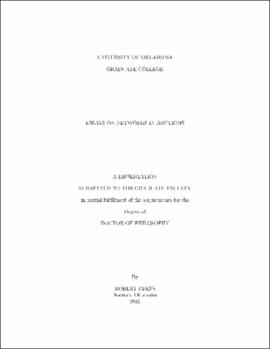| dc.description.abstract | My dissertation chapters study the effects networks play in an auction setting. My first chapter explores how subcontracting creates affiliation between firm's costs in an auction setting. It first offers a theoretical framework associating subcontractor networks in procurement auctions to affiliated costs of potential bidders. Based on the methodology by Li and Zhang (2010), I construct a model that allows for cost affiliation depending on firm-pair observables. The extension is used to test for entry affiliation caused by overlapping subcontractor networks in a sample of Oklahoma Bridge building contracts from 2004 to 2011. The empirical analysis finds a statistically significant presence of affiliation, driven by subcontracting networks, affecting firms' decision to buy for project plans.
Chapter 2 is joint work with my adviser Dr. Georgia Kosmopoulou, Dr. Dakshina DeSilva, and Dr. Rachel Pownall. It aims to identify factors contributing to price fluctuations in artworks after an artist's death. With access to information on seller characteristics from a historical dataset of all art auctions that took place in London between 1741 and 1913, we investigate how trading patterns and network effects affect art sales prices at auctions. Following an artist's death, we capture dynamic effects in sales patterns and find that prices decline by 7%. We attribute this decline on the confluence of non-strategic and strategic effects, firstly on a frequent lack of access to professional consultation and secondly on changes in trading patterns of art dealers posthumously. Our results highlight the long term influence of those factors on high valued art.
The final chapter is again joint work this time, with my adviser Dr. Georgia Kosmopoulou, Dr. Richard Sicotte, and Dr. Hojin Jung. In public procurement, most contracts are renegotiated ex post and involve subcontractors. We examine whether there is a causal link between subcontractor use and the incidence of change orders to amend the original scope of a project. Since subcontracting is likely related to unobserved project complexity, we use a novel IV, the predicted level of subcontracting from a method modeled after Christakis et al. (2010), to estimate the likelihood of renegotiation. The results establish that subcontractors are associated with an increased likelihood of change orders as well as a higher dollar amount renegotiated. | en_US |

